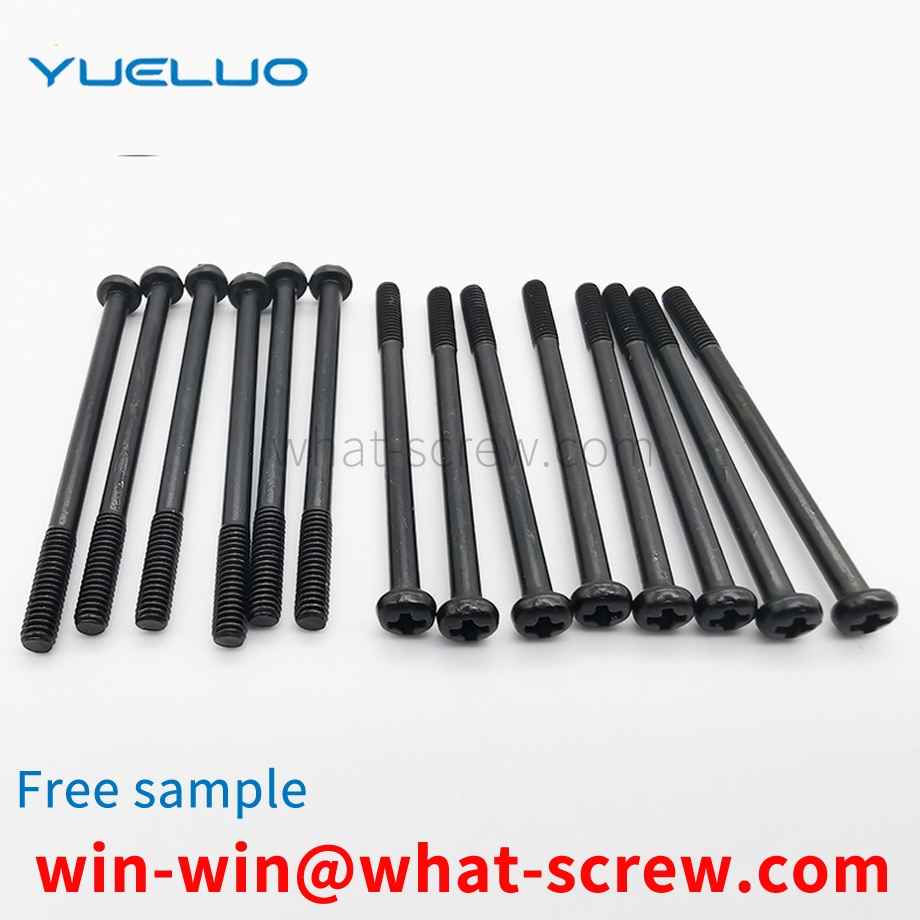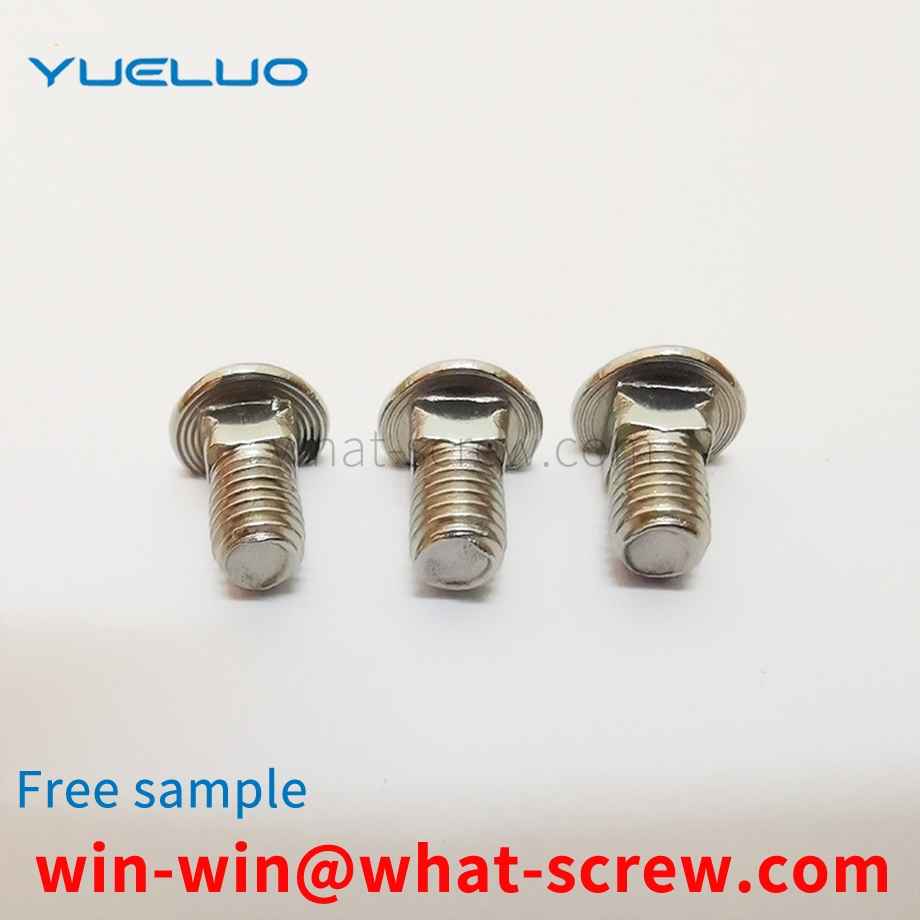Heat resistance refers to both the oxidation resistance or gas medium corrosion resistance at high temperature, that is, thermal stability, and at the same time, it has sufficient strength at high temperature, that is, thermal strength. As the material requirements of products produced by customers are getting higher and higher, the requirements for screws used in product materials are also getting higher and higher. When product materials face harsh environments and special occasions, more and more high-quality mechanical properties of stainless steel screws are used. Therefore, stainless steel screws were selected. The requirements are getting higher and higher, and the material of stainless steel screws is getting higher and higher. Therefore, many ordinary stainless steel screws SUS201 are replaced by stainless steel SUS304 screws and stainless steel screws SUS316. Of course, if some requirements are not so high, general customers will choose stainless steel screws SUS201, which are relatively cheap in cost.
Inch Screws C-1: Thread Code: The denominator is marked as 8, and then the numerator is directly called the number. Ex: 1/8 x 0.50 –PPB: 1 Thread screw x 0.50” long, PPB Ex: 5/16 x 0.50 –PPB = 2.5/8 x 0.50-PPB : 2 ½ inch screw x 0.50” long, PPB Ex: 5/32 x 0.50 –PPB =1.25/8 x 0.50-PPB: 1 ½ ½ inch screw x 0.50” long , PPB Ex: 1/4 x 0.50-PPB= 2/8 x 0.50-PPB: 2-point screw x 0.50” long, PPB Note: Coarse or fine pitch is sometimes indicated. UNF: Fine pitch: more commonly used in the electronics industry UNC: Coarse Thread: More commonly used for heavy machinery construction. Ex: 3/8 x 0.50, UNF –PPB: 3 point fine thread screw x 0.50” long, PPB. C-2: Length Code: In inches, must be multiplied by 25.40 is converted to mm. Measured with a buckle gauge, it is a metric thread when it matches the metric thread, and an inch thread when it matches the inch thread. You can also use a caliper to measure the outer diameter and pitch of the thread. The outer diameter of the metric thread is in millimeters, Such as 6, 8, 10, 12, 18, 20 mm, etc., the pitch is also in millimeters, such as 0.5, 0.75, 1, 1.5, 2, 3, etc. The outer diameter of the imperial thread is in inches, (per inch Equal to 25.4 mm) such as 3/16, 5/8, 1/4, 1/2, etc. Therefore, the reading of the outer diameter with a metric caliper often has irregular decimals. The inch pitch is expressed by how many teeth per inch. Set the caliper at 25.4 mm, align one caliper tip with the thread cusp, and the other caliper tip, if aligned with the thread cusp, is an inch thread, and if the thread cusp is not aligned, it should be a metric thread. The tip is printed on the white chalk. The chalk is clear and easy to measure. To measure the metric pitch, you should measure a length, such as 10, 15, 20, millimeters, etc., count how many teeth are included, and calculate the pitch in inches. The specified thread specification is inch thread, such as: G1. Metric threads are specified in metric units of millimeters. Such as: M30. The imperial system is determined by how many teeth there are in one inch (2.54 cm), generally a 55-degree angle. The metric system is the pitch determined by the distance between the two tooth tips, usually a 60-degree angle anchor screw: tighten the machine, etc. Screws for use on the ground. Also called anchor bolts. The difference between British and American screws is difficult to distinguish visually. The difference between British and American screws is that the rolling angle of British screws is 55 degrees, while the rolling angle of American screws is 60 degrees. These two standard screws are used in most screws. It can be used in general, but 1/2 size screws are not allowed, because the standard thread of inch 1/2 is 1/2-12 teeth, while the American system is 1/2-13 teeth.
On the other hand, especially in the aerospace field, the requirements for the sealing effect of screws are extremely strict, and the traditional screws are directly tightened when screwed into the workpiece or equipment, and the sealing effect is determined by the tightness, but due to the machining error of the workpiece or equipment The direct butt seal between the seals is difficult to achieve.
1. The taper of the reaming hole should be 90°. It should be guaranteed that it should be less than 90° rather than greater than 90°. This is a key trick. 2. If the thickness of the sheet metal is less than the thickness of the head of the countersunk head screw, you can replace the screw with a smaller size, or it is better to ream a smaller hole instead of reaming the hole to increase the diameter of the bottom hole and cause the parts to not be pressed tightly. 3. If there are multiple countersunk head screw holes on the part, it should be processed more accurately. Once it is drilled crookedly, it will be ugly to assemble, but as long as the error is not large, it can be tightened completely, because when tightening, if the diameter of the screw is not very large. Large (about no more than 8mm), when there is an error in the hole distance, the screw head will be deformed due to the force when it is tightened or it will be tightened.
A rivet is a nail-shaped object used to connect two parts with a through hole and a cap at one end. It is mainly used in riveting to connect the riveted parts by its own deformation or interference.
We have many years of experience in the production and sales of screws, nuts, flat washers, etc. The main products are: rod motherboard copper column, furniture screws, mold screws, hexagonal belt bolts and other products, we can provide you with suitable fastener solutions for you .



















 Service Hotline
Service Hotline




